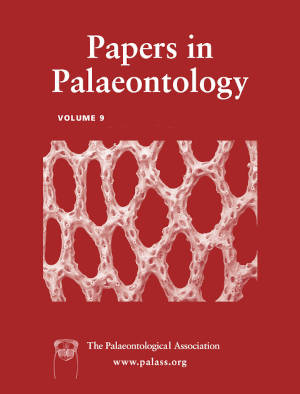Reg. Charity No. 1168330

Abstract Eubrachyurans, or ‘higher’ true crabs, are the most speciose group of decapod crustaceans and have a rich fossil record extending into the Early Cretaceous. However, most extant families are first found in the fossil record in the Palaeogene, and particularly in the Eocene. Unfortunately, fossils of many early eubrachyuran groups are often fragmentary, and only a few studies have combined extinct and extant taxa in a phylogenetic context using different optimality criteria. Here, we report the dairoidid crab Phrynolambrus sagittalis sp. nov., an enigmatic eubrachyuran from the upper Eocene of Huesca (northern Spain), whose completeness and exquisite preservation permit examination of its anatomy in a phylogenetic context. Dairoidids have previously been considered among the oldest stone crabs (Eriphioidea) or elbow crabs (Parthenopoidea), two disparate and distantly related groups of true crabs living today. Mechanical preparation and computed tomography of the fossil material revealed several diagnostic features that allow a detailed comparison with families across the crab tree of life, and test hypotheses about its phylogenetic affinities. Phrynolambrus sagittalis is the first record of the genus in the Iberian Peninsula, and represents one of the oldest crown parthenopoidean crabs worldwide, expanding our knowledge of the biogeographical distribution of elbow crabs during the Palaeogene, as well as their early origins, anatomical diversity and systematic affinities. Understanding the disparity of Eocene eubrachyurans is pivotal to disentangling the systematic relationships among crown families, and interpreting the spatio-temporal patterns leading to the evolution of modern faunas.